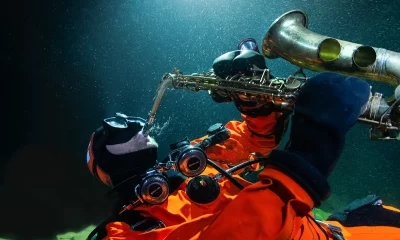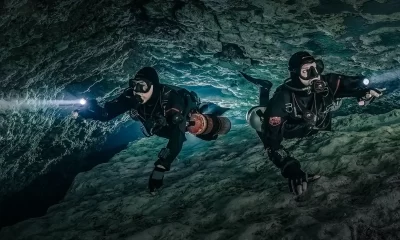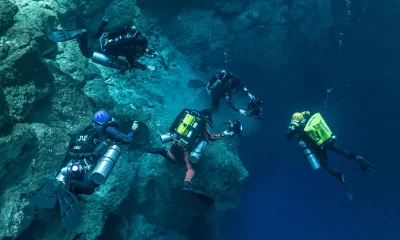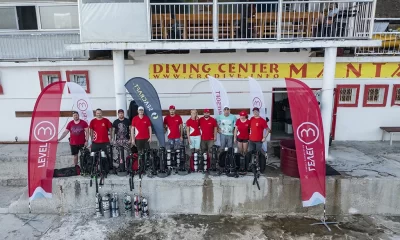Community
The Making of an Underwater Scientist: Meet the AAUS’s new President Jessica Keller
Growing up with cows and cornfields, it might have seemed unlikely that 36-year Jessica Keller would go on to become one of the bright lights in the scientific diving firmament. Her aqueous predilection was set in motion during her university days when she discovered the lure of underwater archeology and never looked back. Since then, the passionate young diving scientist, who was recently elected president of the American Academy of Underwater Sciences (AAUS), has worked as a marine archeologist, a government dive training specialist, and currently serves as a Diving safety Officer (DSO) at the University of Miami. Longtime dive journalist Betty Orr provides an introduction.
By Betty Orr. Images courtesy of J. Keller unless noted.
🎶 Predive Clicklist: Hamilton: My Shot – Official Lyric Video🎶
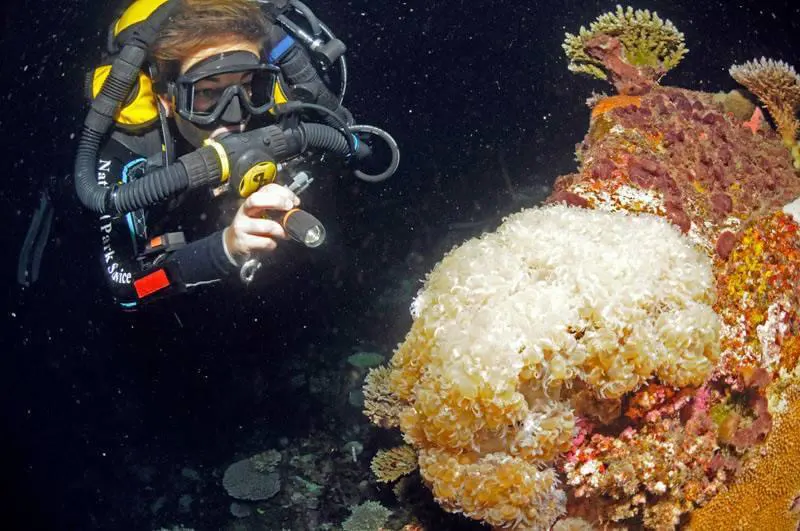
If you haven’t met Jessica Keller, the newly elected president of the American Academy of Underwater Sciences (AAUS), it’s time that you were introduced.
Jessica graduated from Indiana University with an emphasis on Underwater Archeology. The credentials that follow her name include MS, Register of Professional Archeologists (RPA), DAN Instructor Trainer, SOS Hyperlite Emergency Hyperbaric Stretcher Operator, NBDHMT Diver Medic Technician (DMT), and a NREMT Emergency Medical Technician (EMT).
This highly credentialed young woman has worked for the US National Parks Service (NPS) as an Archeologist for the Submerged Resources Center and among other accomplishments and duties has dived the USS Arizona; she won a grant from the Women Divers Hall of Fame to develop an educational outreach program for the NPS called “Underwater Explorer” complete with a booklet for young park visitors, designed to reach youth and to create and foster an interest in the oceans. And, she is certified in open and closed circuit diving, trimix and cave diving and a SDI/TDI and PADI Instructor. There’s a lot to know about Jess, both above and under the water, and here are some questions I asked her to help with that understanding.

InDEPTH: What got you into diving and what made you want to make it your profession?
Jessica Keller: I grew up in a small town in rural Indiana surrounded by cornfields and cows. I always had dreams of a crazy career like becoming a tornado chaser, or maybe a jockey (that ended with a growth spurt). I toyed with the idea of being a Broadway actor, or Indiana Jones, but those were dreams, or so I thought. Attending Indiana University for theater, I quickly realized that my expectations were far from possible. Thus began my exploration phase of taking random courses to figure out what I wanted to be when I grew up (spoiler alert: still working on it).

After Irish dance, Taekwondo, and Edible Wild Plants, I found scientific diving and underwater archaeology. A diving Indiana Jones? Yes, please! Water has always been part of my life through the backyard pool, swim team, and lifeguarding, but I never thought about a career in it. Once that idea was planted, there was no turning back. I declared majors in both Anthropology and created an Individualized Major Program for Underwater Archaeology. After undergrad, I had the opportunity to work as a divemaster and instructor at Quiescence in the Florida Keys. I then returned to Indiana University for a master’s degree. I was fortunate enough to work as a visiting lecturer at the university, teaching the very same classes that changed my life—a full circle.
I can see you bring a lot of passion to your work as well!
My passion developed not only from science, diving, and exploration, but also through educational outreach. Being able to show people what is under the water and why they should care was inspiring. When I worked at the National Park Service’s Submerged Resources Center, educational outreach was a big factor of our job. We would go into local schools or attend conferences with 3D footage of underwater parks. Seeing how excited kids (and adults) became when viewing shipwrecks or coral reefs was the best. I have always wondered where I would be if I had seen that underwater footage when I was young. It’s safe to say that scientific diving, and diving in general, utterly transformed and shaped my life.
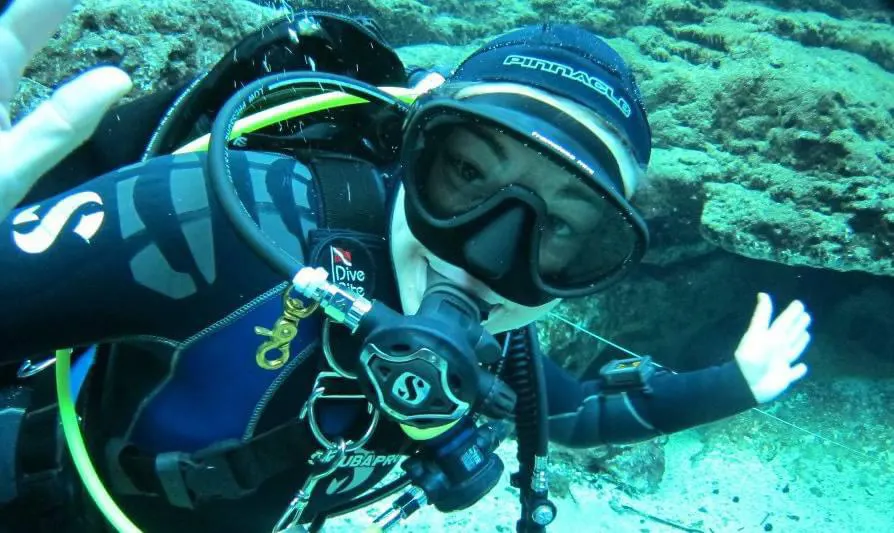
What is your current position?
Since June 2021, I have been one of the Diving Safety Officers (DSO) at the University of Miami (UM). The DSOs lead the scientific diving program under the direction and authority of the Diving Control Board (DCB). We ensure safe diving activities for the laboratories on campus that research coral restoration, fish surveys, shark monitoring, etc. We also teach a semester-long AAUS scientific diving course for up to 96 undergraduate and graduate students per year.
Prior to becoming a DSO, I was a Training Specialist at the NOAA Diving Center where I was one of the instructors for the NOAA Diver Course and was trained as a Hyperbaric Chamber Supervisor. A focus on instruction and hyperbaric treatment in this capacity was a shift from my previous position as an archaeologist with the National Park Service’s Submerged Resources Center for over seven years.
What’s a typical day like for you?
There are no typical days, because no two days are the same. The summers tend to be full of dive projects while the semesters entail organizing lots of paperwork, conducting checkout or training dives, and a lot of pool instruction.
I understand that you were recently elected as the President of the AAUS. Congratulations! What do you hope to accomplish in your tenure?
My main goals for the next two years are to keep the Academy moving on the previously established Strategic Plan while continuing to support the scientific diving community in whatever way possible. AAUS is and has been in good hands under the Operations Manager, Heather Albright. She is not only the sole employee, but also the heart and soul of AAUS. The Board of Directors and the standing/working committees are the champions of the organization as well. As volunteers, these members work across the USA and the world to help better the scientific diving community through standards, membership, and training.
Additionally, the two previous Presidents, Derek Smith and Jim Hayward, left big shoes to fill, as their terms were so successful in accomplishing the goals of the Academy. As the second female President in AAUS’s history, I do feel a bit of extra pressure to succeed though, from the above-mentioned folks, I am surrounded by wonderful, hardworking people who are dedicated to our community, and they are the reason AAUS is successful. We have an upcoming Diving for Science Symposium this April in Fort Pierce, Florida, so we have to hit the ground running.
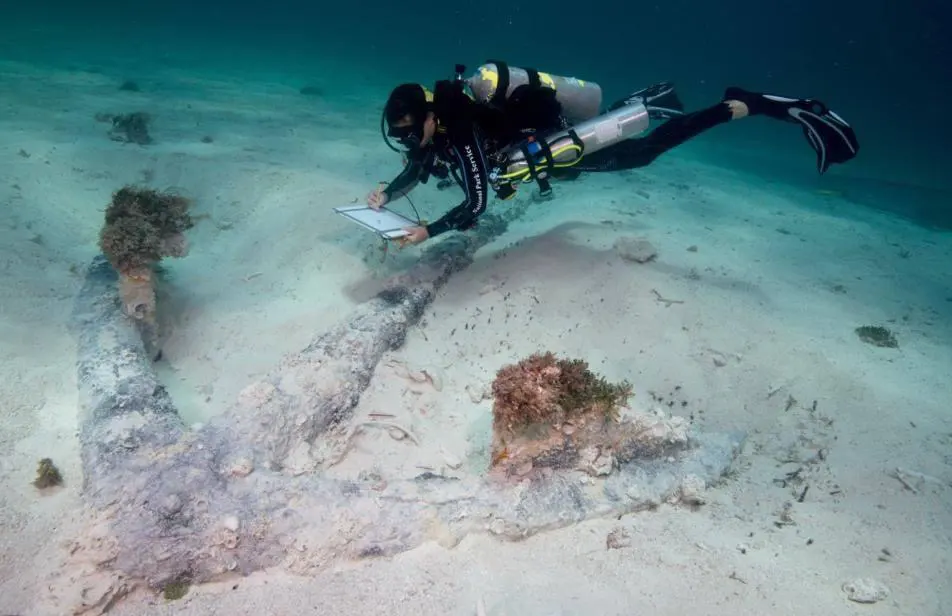
What do you think your best skills are? The ones that you bring to your job and will affect your future as AAUS’s President?
On top of my near OCD level organization skills, (I mean life is just better when it’s color coded!), my communication skills are one of my greatest strengths. I believe in clear and concise communication. I will be honest, some may think I am maybe a little too blunt, but I’d prefer everyone understand exactly what I am saying. I believe these communication skills will be an asset as President. AAUS prides itself on its transparency as a community organization and my style of communication knows no other way.
What did you do to prepare yourself for a future as a diving professional?
This is a tough one, as there are so many pathways to becoming a diving professional. Diversifying your skill set can set you apart from other divers if you bring something new to the table. Adding additional skills or knowledge to a team can make you an asset. Besides the typical recreational route of working as a divemaster before becoming an instructor, I had one experience that shaped my personal path.
Early in my career, on a project in a remote part of the Dominican Republic, there was a diver that had a medical emergency. The situation ended well; however, I felt helpless in that situation. I made it a point to educate myself with knowledge relating to emergency medicine and diving related injuries. In 2008, I became an EMT-B and after a few years, a DMT on the National Registry. Keeping these certifications current is not an easy feat; however, having them has been extremely beneficial.
Preparing to become a diving professional doesn’t end when you receive the certifications. It’s about continuing to learn and gain more knowledge and skills. There will always be someone more knowledgeable, more qualified, more “something” than you, so go learn from them!
Later, when working with the NPS, another diving incident occurred. How did successfully rescuing a fellow diver impact you and change your diving?
As a newly minted CCR diver and an intern in 2012, the Lake Mead incident impacted me in several ways. [Ed. note: Keller successfully rescued her boss, NPS head marine archeologist David Conlin, who experienced a double oxygen sensor failure resulting in a CNS oxygen toxicity hit at depth]
First, was the recognition of how much of an important role prior training played in the outcome and response. The hours spent training in-water along with the ‘what if’ conversations/scenarios that occurred with instructors, mentors, and teammates helped with the decision making that day. I had been on several body recoveries, and missing diver searches before this event, but this was the first time I had been a direct participant in the actual event.
That must have been powerful!
It was. In the days after, we broke down every detail trying to learn from the event and figure out what we could have done differently. The incredible outcome was based on countless factors that fell in our favor from staggering diver entry, environmental factors, and local emergency resources. For me, personally, it wasn’t until later that year when Dr. Simon Mitchell et al. published “Recommendations for rescue of a submerged unresponsive compressed-gas diver” in Undersea and Hyperbaric Medicine (UHM) that I stopped questioning myself and my actions. That publication will always be near and dear to me as it outlines in-water decisions with an unresponsive diver and reaffirmed my actions.
Secondly, that day made me realize how critical ‘diving in the moment’ is—on every dive—but especially technical dives. The “same dive, same ocean,” or just being a passenger on a dive, mentality could result in a bad outcome. It can be easy to zone in on collecting data or framing the shot, but is it worth losing a buddy over? Being engaged with your buddy and surroundings is critical, as issues can arise quickly.

What are your diving pet peeves?
There is nothing worse than, when I am teaching students, I witness poorly conducted dive buddy teams. Buddy teams are the basis of safe diving practices, especially in scientific diving. For me,the sense of security this brings and the ease of working with someone that you can rely on underwater is one of the true pleasures of working in this field. Also, foggy masks, either on other divers or my own. A foggy mask can be extremely frustrating during a dive!
What are some causes you care about?
Marine debris cleanups, especially the removal of helium balloons and derelict lobster traps. I also love refillable water bottles and would love to see a reduction of single-use plastic bottles.
If you could be anywhere other than here, right this minute, where would you be? (Don’t overthink it!)
In a cave somewhere!
What do you want people to remember about you?
I would like to be remembered as someone who made valuable contributions to scientific diving and who encouraged others to care about our underwater world. I also take great pride in mentoring all the young women that come through the scientific diving program at UM. Every year I see more and more women in the STEM fields, and I am just so excited for what this means for the future of women in science and diving!
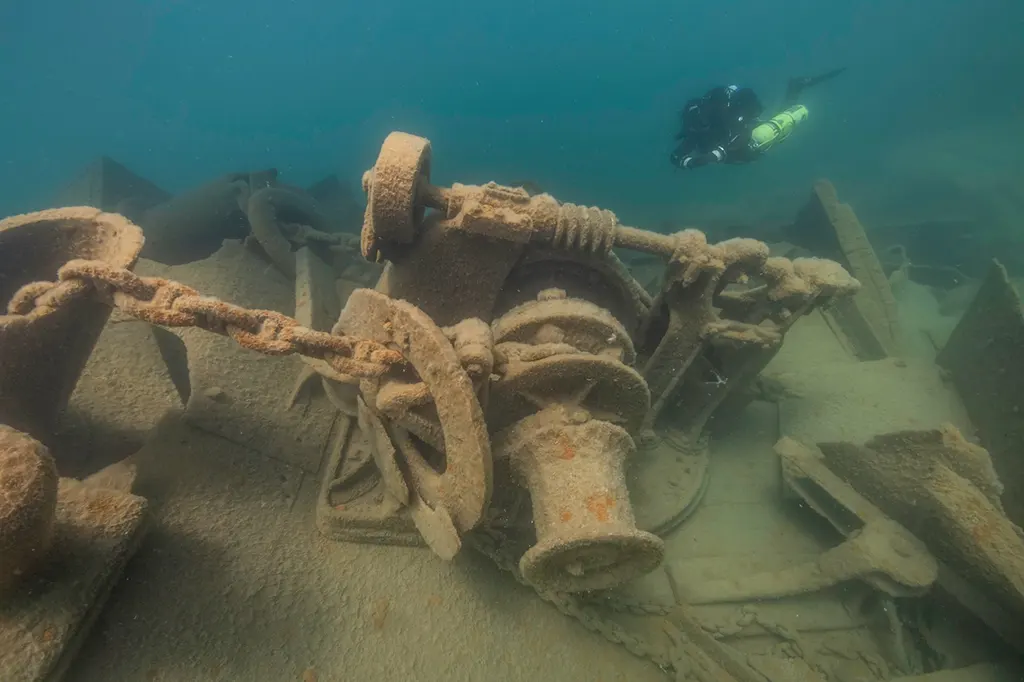
Do you have a personal motto?
I always get this wrong when I try to say it to my students, but I firmly believe that the best way to keep your head in high stress moments is to remember “slow is smooth, smooth is fast.”
I like that. Thank you Jessica. As an admirer of this amazing young woman, I would like to share something Jessica said in her presentation at DEMA membership in 2018 when she received the DEMA Wave Makers Award as someone working in the industry for five years or less who had made a significant contribution to the industry during that time.
She said, “I believe the future of our diving industry lies in our younger generations and in the powerful role of mentorship.”
Jessica Keller, a diver worth knowing!
DIVE DEEPER
UHM 2012: “Recommendations for rescue of a submerged unresponsive compressed-gas diver” by Dr. Simon Mitchell et al (2012)
InDEPTH: How I Became a Scientific Diver by Jenn Thomson
InDEPTH: The Early Days of Science Diving by Bill High
InDEPTH: OSHA vs. The Houston Aquarium: What Constitutes A Scientific Dive?
Human Diver: Day 1-Hall 1-#6-Culture from the Inside How a Bureaucracy Responded to Dive Accident – Dave Conlin
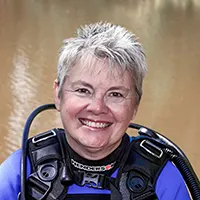
Betty Orr is Vice-President of Dan Orr Consulting, providing a variety of services to the global diving community. She retired from Divers Alert Network and DAN Services after 23 years as Vice-President of Insurance Services. Prior to coming to DAN, she worked for the Florida Department of Regulation as an agent in the Division of Planning and Research and Sinclair Community College in Dayton, Ohio as an Associate Professor of Biology.
Betty served as Managing Editor for Dive Training Magazine and Dive Center Business Magazine until 2020.Betty has co-authored a book with Dan Orr, her husband, 101 Tips For Recreational Scuba Divers and has given lectures at Boston Sea Rovers, Beneath the Sea and The Scuba Show and has contributed to many books and magazine articles in scuba diving and is an editor for books of all genres. Betty has Bachelor’s and Master’s degrees in Biology. She is an inaugural year member of The Women Divers Hall of Fame.













